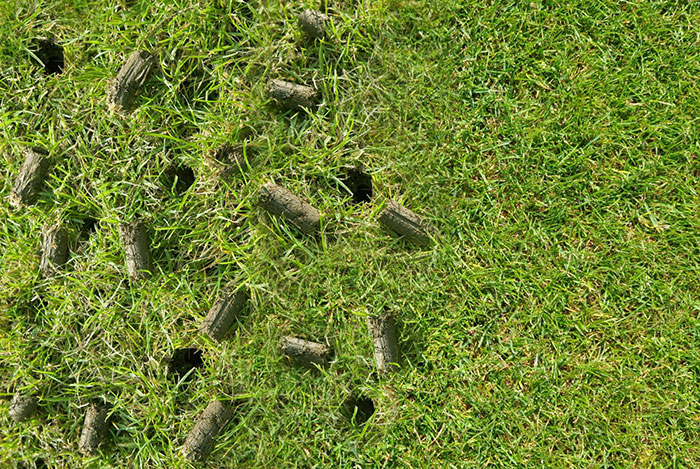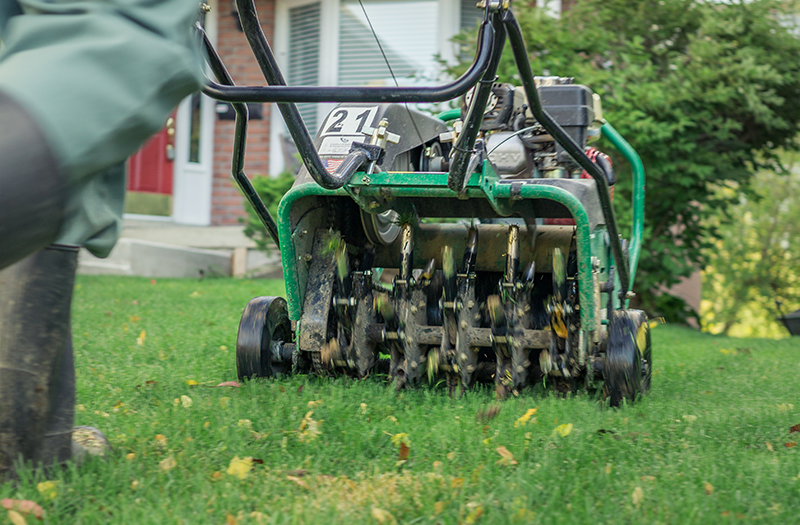Lawn aeration is a fundamental practice in lawn care that involves perforating the soil with small holes to alleviate compaction and enhance the flow of air, water, and nutrients to the grassroots. Compacted soil can restrict the movement of these essential elements, hindering the overall health and vitality of the lawn. Aeration is particularly beneficial in areas with heavy foot traffic or clayey soils that are prone to compaction.


There are various methods of lawn aeration, with the two primary techniques being spike aeration and core aeration. Spike aeration involves puncturing the soil with solid tines, while core aeration utilizes hollow tines to extract small plugs of soil from the lawn. Core aeration is generally considered more effective as it not only relieves compaction but also creates space for new root growth and improves the overall structure of the soil.
Call Now For A Free Quote
07808 567131
The timing of lawn aeration is crucial, and it is typically recommended during the growing seasons, either in the spring or fall. Aeration is most effective when the grass is actively growing, allowing it to recover more quickly from the disruption caused by the process. Lawns that undergo aeration experience several benefits, including improved water absorption, enhanced fertilizer uptake, and increased tolerance to drought and disease. The process also encourages the development of a denser, healthier turf by promoting deeper root growth and reducing thatch accumulation.
Professional lawn care services often offer specialized equipment for aeration, ensuring that the process is conducted efficiently and with minimal disruption to the lawn. Homeowners who invest in regular lawn aeration find that their lawns not only look greener and more vibrant but are also more resilient and better equipped to withstand environmental stresses.
